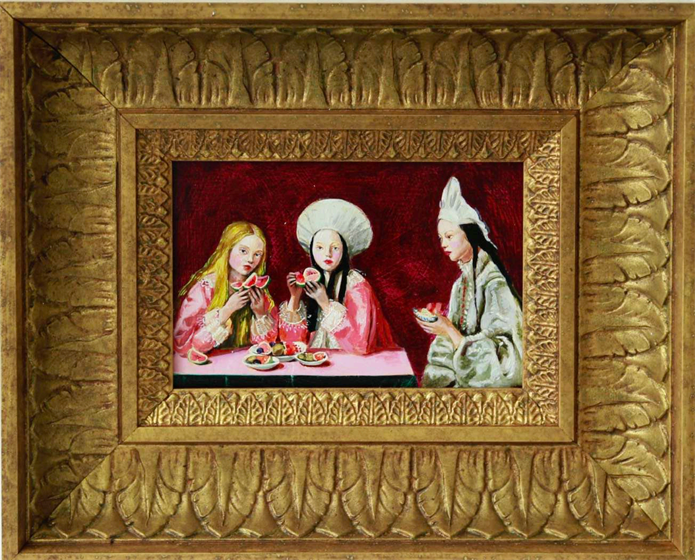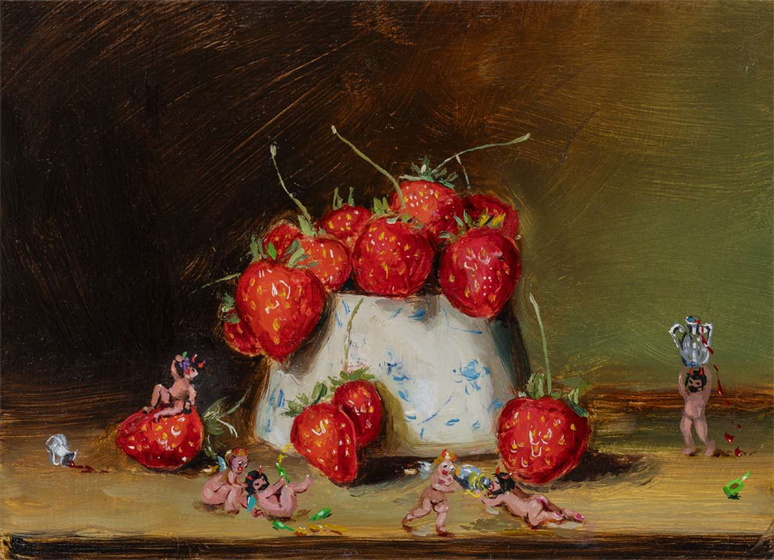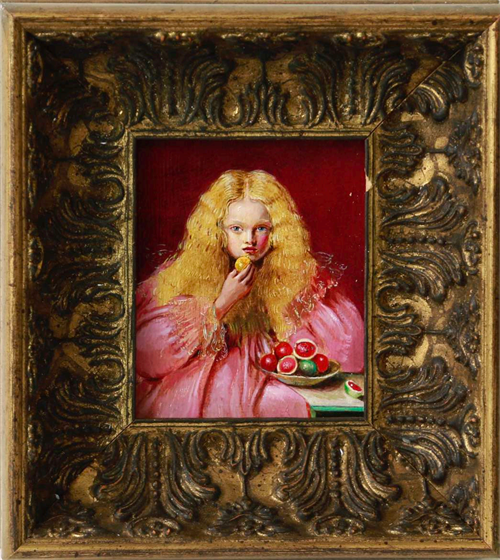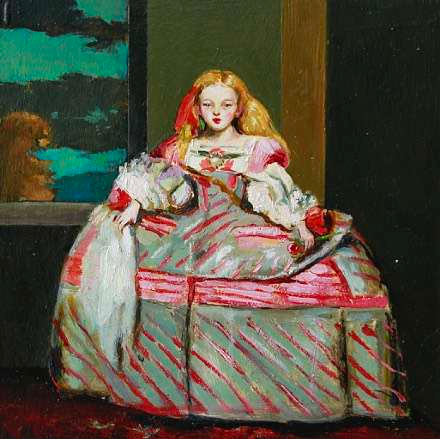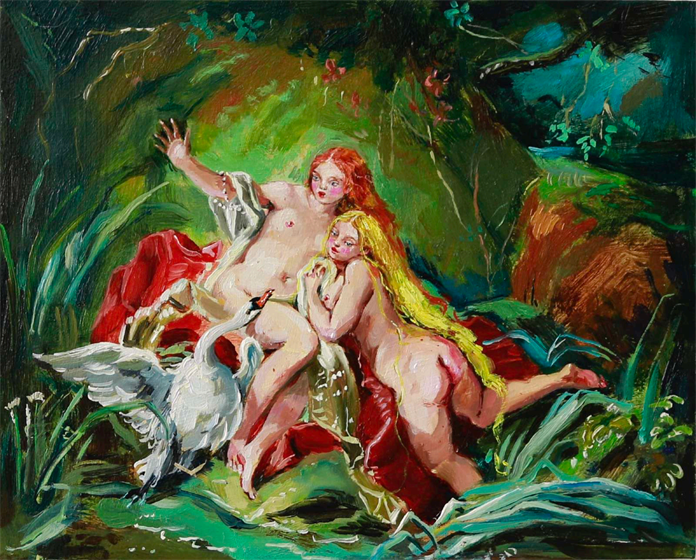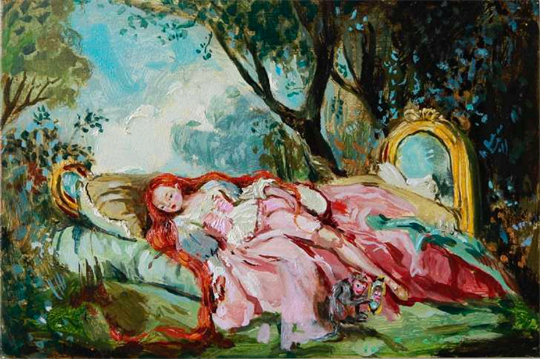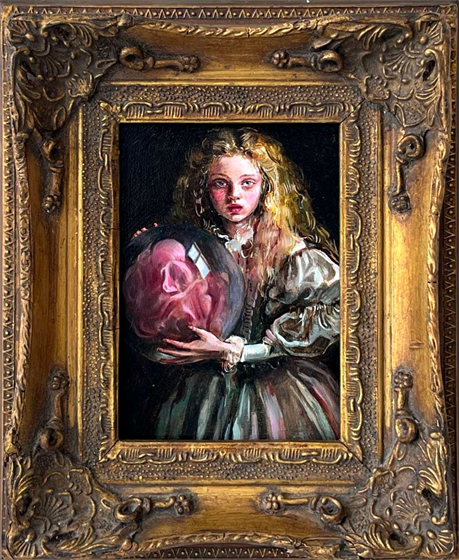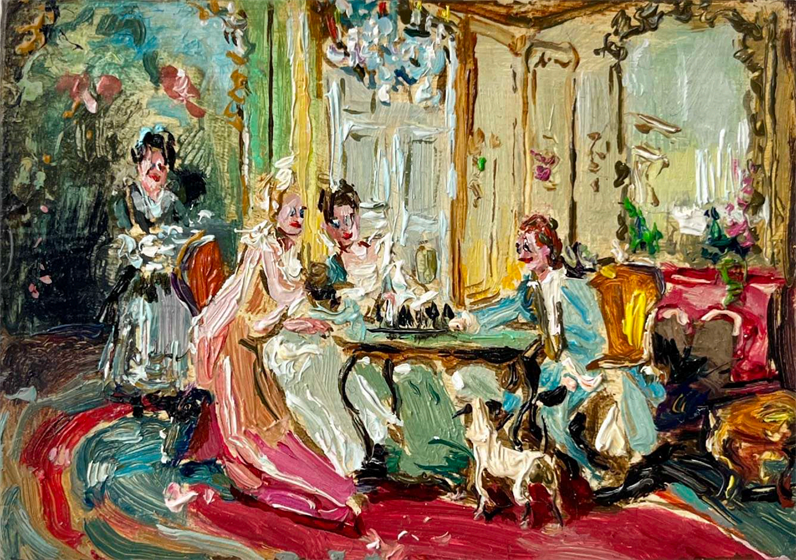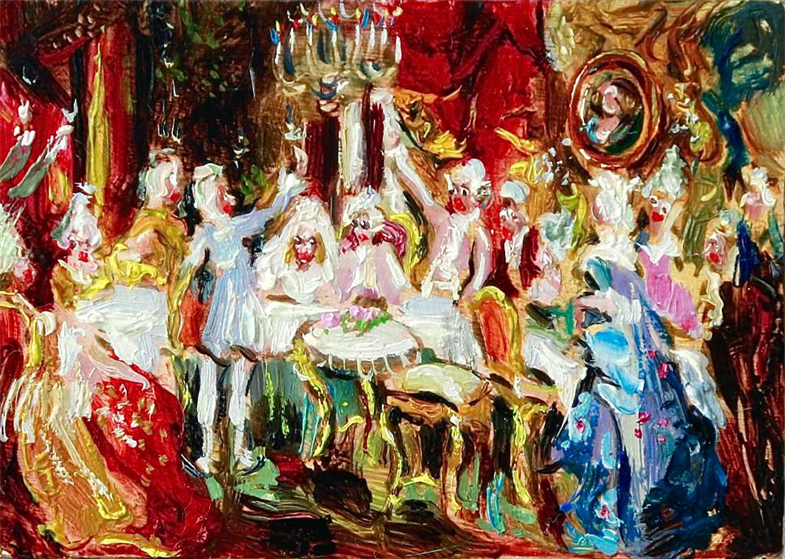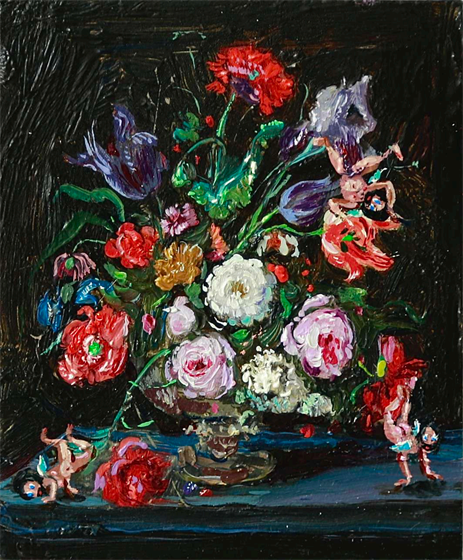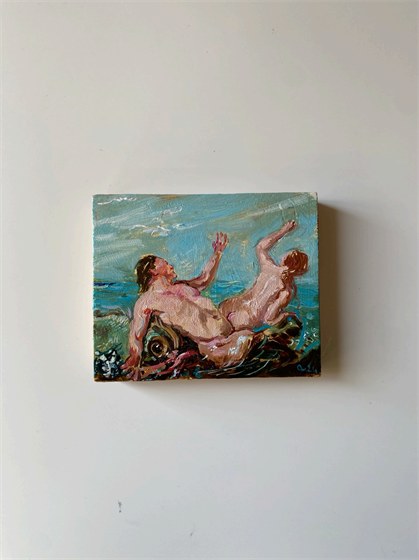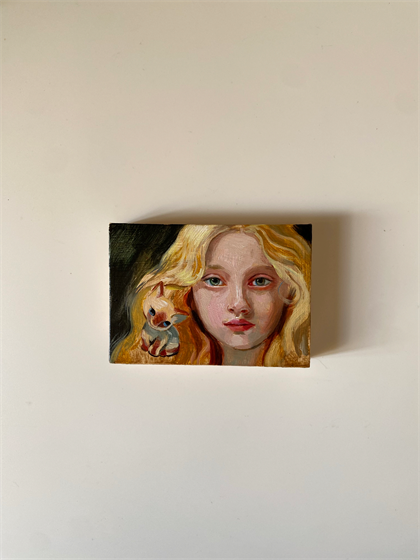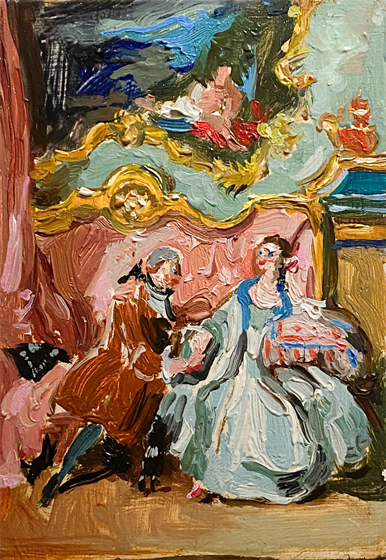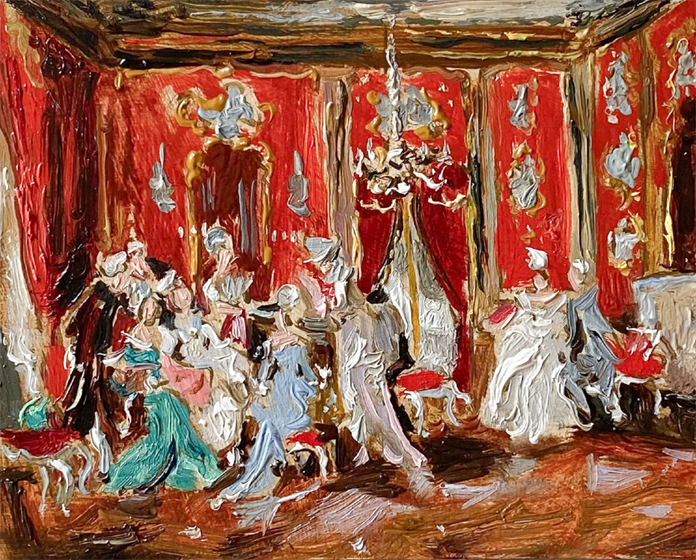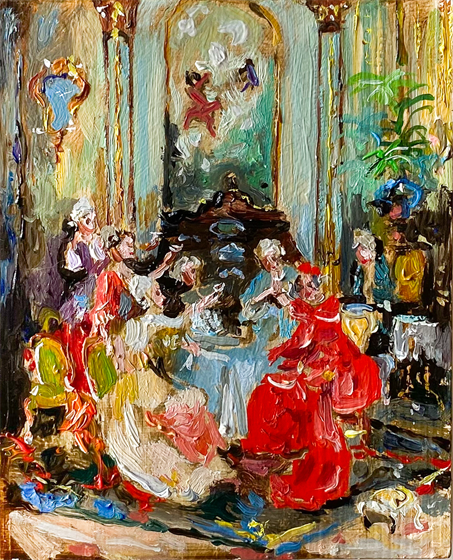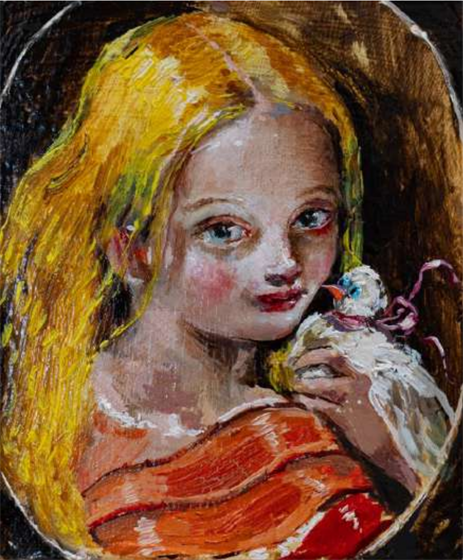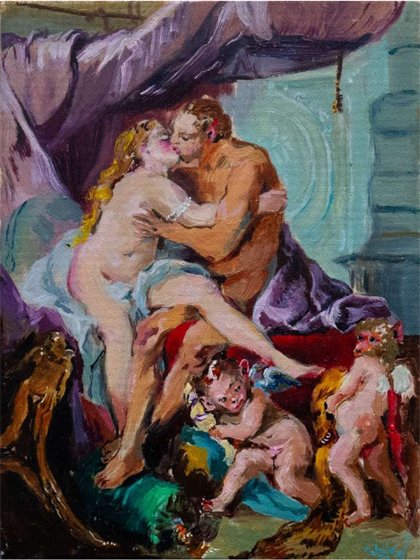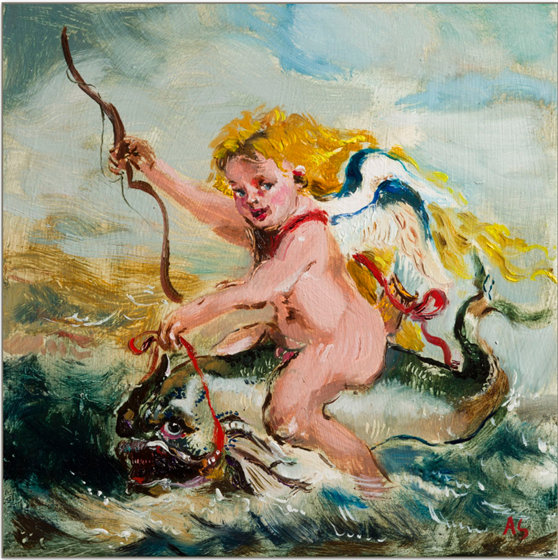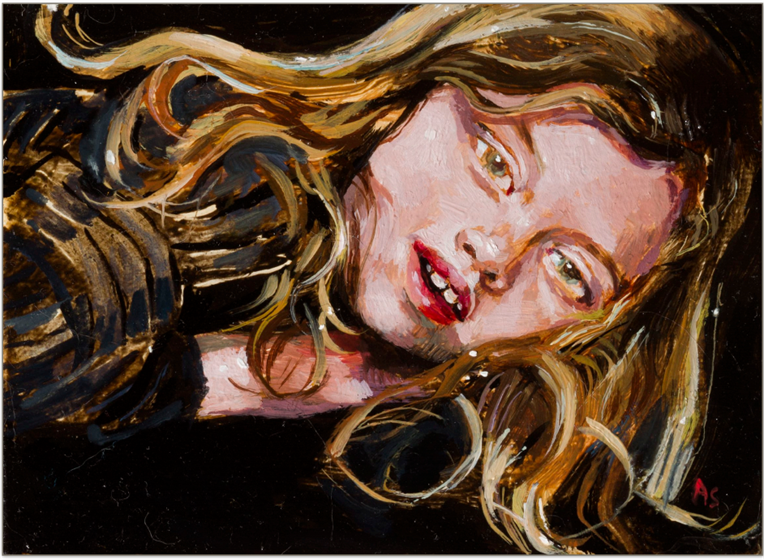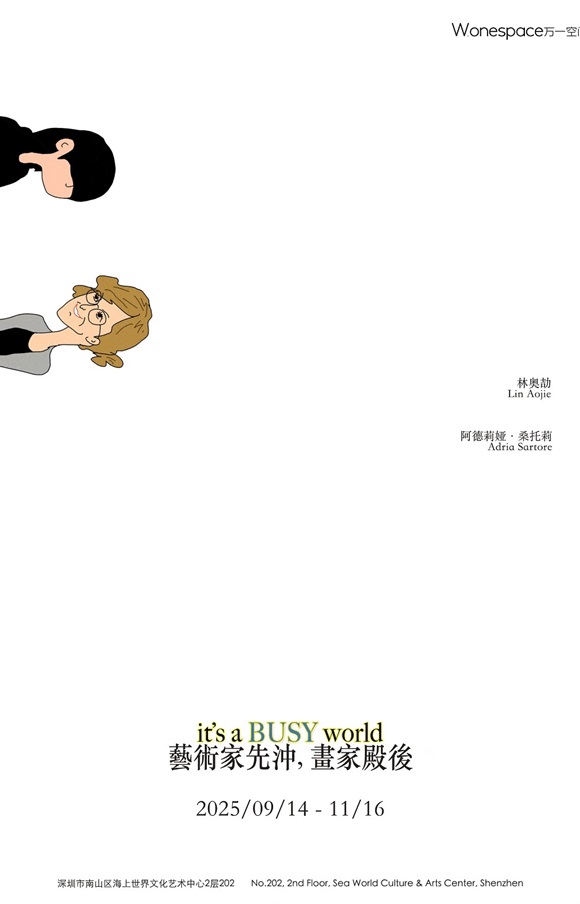Adria Sartore
Adria Sartore (b.1969, Genoa). Currently lives and works in Genoa. Graduated from the Brea Academy of Arts, the University of Genoa and the Sorbonne University in Paris, with a doctorate in aesthetics and philosophy, from 1990 to 1997. In 2004, her work was selected for the BP Portrait Award and was invited to exhibit at the National Portrait Gallery in London.
Italy's traditional cultural heritage, fairy tales and classical art are all nutrients in Adria’s genes, and she is especially fond of presenting the emotions in her life and visual memory in a palm-sized scale. By using the medium of traditional oil painting on wood, the artist constructs a series of new "mythical" scenes with a small view, which is a synthesis of graphic exploration and symbolic concepts. She makes good use of characters and symbols, and uses a third-person perspective to change the relationship between people and objects in the original work, as if breaking into an over-sacred story, making it present a sense of humor and humor. Beauty and grotesque, praise and disgust, these contradictory emotions run through the works, presenting a strong tension between the two poles, which is also the meaning that the artist is committed to exploring and pursuing.
Adria Sartore (b.1969, Genoa). Currently lives and works in Genoa. Graduated from the Brea Academy of Arts, the University of Genoa and the Sorbonne University in Paris, with a doctorate in aesthetics and philosophy, from 1990 to 1997. In 2004, her work was selected for the BP Portrait Award and was invited to exhibit at the National Portrait Gallery in London.
Italy's traditional cultural heritage, fairy tales and classical art are all nutrients in Adria’s genes, and she is especially fond of presenting the emotions in her life and visual memory in a palm-sized scale. By using the medium of traditional oil painting on wood, the artist constructs a series of new "mythical" scenes with a small view, which is a synthesis of graphic exploration and symbolic concepts. She makes good use of characters and symbols, and uses a third-person perspective to change the relationship between people and objects in the original work, as if breaking into an over-sacred story, making it present a sense of humor and humor. Beauty and grotesque, praise and disgust, these contradictory emotions run through the works, presenting a strong tension between the two poles, which is also the meaning that the artist is committed to exploring and pursuing.


